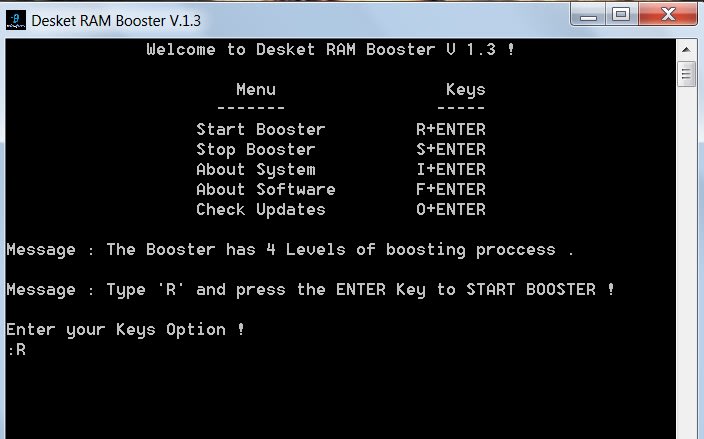Ram Booster Windows 7


External storage must meet the following requirements: • Capacity of at least 256 MB, with at least 64 kilobytes (KB) of free space.The 4-GB limit of Windows Vista has been removed. • At least a 2.5 MB/sec throughput for 4-KB random reads • At least a 1.75 MB/sec throughput for 1-MB random writes The most effective way to determine whether a specific flash drive meets ReadyBoost requirements is to test it. Windows Vista and Windows 7 automatically test removable storage when attached. If a storage device fails the test, Windows will automatically retest the storage on a regular basis. Some devices will show the phrase “Enhanced for Windows ReadyBoost” on the packaging, which means that Microsoft has tested the device specifically for this feature. If you connect a flash drive that meets these requirements, AutoPlay will provide ReadyBoost as an option. Download Free Power Iso Magic Disc Mount more.
Oct 15, 2017 - Mz Ram Booster for Windows 10/8/7 helps you to Boost Your RAM and Speed Up Your PC in just a few clicks. IT shuts down background processes, tweaks system settings, etc. Free Download Mz RAM Booster 4.1. Windows XP • Windows XP 64 bit • Windows Vista • Windows Vista 64 bit • Windows 7 • Windows 7 64 bit.
Alternatively, you can configure ReadyBoost by right-clicking the device in Windows Explorer, clicking Properties, and then clicking the ReadyBoost tab. Pieces Of You Tablo Book Pdf. The only configuration option is to configure the space reserved for the cache.
You must reserve at least 256 MB. Larger caches can improve performance, but the ReadyBoost cache cannot be greater than 4 GB on a FAT32 file system or greater than 32 GB on an NTFS file system. Windows 7 use the Windows SuperFetch algorithm to determine which files should be stored in the cache. SuperFetch monitors files that users access (including system files, application files, and documents) and preloads those files into the ReadyBoost cache.
How To Download From Http //fileice.net on this page. All files in the cache are encrypted using 128-bit AES if the flash storage device is removable, but hardware manufacturers can choose to disable encryption on internal, non-removable ReadyBoost devices. Because the ReadyBoost cache stores a copy of the files, the flash drive can be removed at any point without affecting the computer—Windows will simply read the original files from the disk.
ReadyBoost provides the most significant performance improvement under the following circumstances: • The computer has a slow hard disk drive. Computers with a primary hard disk Windows Experience Index (WEI) subscore lower than 4.0 will see the most significant improvements. • The flash storage provides fast, random, non-sequential reads.
Sequential read speed is less important. • The flash storage is connected by a fast bus. Typically, USB memory card readers are not sufficiently fast. However, connecting flash memory to an internal memory card reader might provide sufficient performance. Computers with fast hard disks (such as 7,200- or 10,000-RPM disks) might realize minimal performance gains because of the already high disk I/O. ReadyBoost will read files from the cache only when doing so will improve performance. Hard disks outperform flash drives during sequential reads, but flash drives are faster during non-sequential reads (because of the latency caused when the drive head must move to a different disk sector).